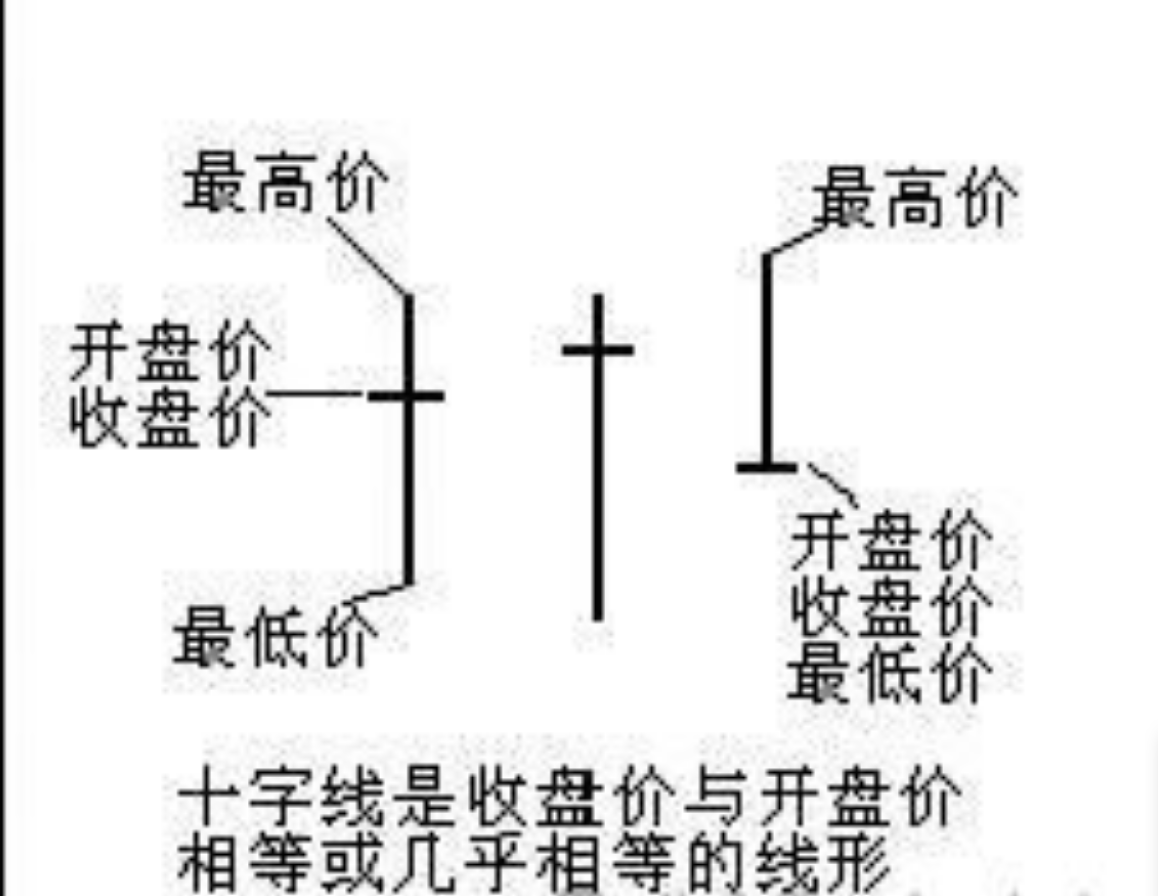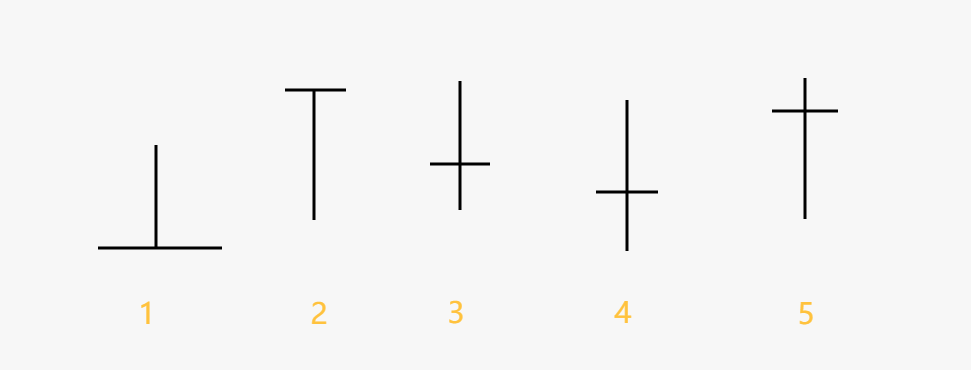Basic Knowledge of Candlestick Charts for Digital Currencies (Part One)
Candlestick charts are a form of charting that originated during the Tokugawa shogunate in Japan. They were initially used by rice traders to record market conditions and price fluctuations, and later introduced to the stock and futures markets due to their unique and detailed marking method. The shapes resemble candles and are differentiated by color, hence they are also called Yin-Yang line charts. Through candlestick charts, one can comprehensively record the market performance of each day or a specific period. After a period of price movement, specific patterns form, from which regular market information can be inferred.
Candlestick charts are drawn based on the opening price, highest price, lowest price, and closing price of each analysis period. Taking daily candlesticks as an example, the portion between the opening and closing prices is drawn as a rectangular body: if the closing price is higher than the opening price, it is called a bullish candle, usually represented by a red body (opening price below, closing price above); conversely, if the closing price is lower than the opening price, it is called a bearish candle, commonly represented by a green body (opening price above, closing price below). Additionally, thin lines connect the highest and lowest prices to the body, forming upper and lower shadows, respectively. It is important to note that in the digital currency, US and European stock, and foreign exchange markets, the color conventions are opposite to those in China, with green commonly representing bullish candles and red representing bearish candles.
Depending on the analysis period, candlestick charts can be divided into 1-minute candlesticks, daily candlesticks, monthly candlesticks, etc. For example, one daily candlestick represents one day, while one 1-minute candlestick represents one minute. There is a containment relationship between candlesticks of different periods: daily candlesticks are formed by the aggregation of 24 hourly candlesticks, and hourly candlesticks are formed by the fluctuations of 60 1-minute candlesticks.
1. What is a Bullish Candle?
Bullish Candle
Bullish candles can be subdivided into various forms based on the combinations of shadows and bodies, each indicating different market meanings: when a bullish candle has no lower shadow and a long upper shadow, it indicates that the price encountered strong selling pressure during its rise; conversely, if there is no upper shadow and a long lower shadow, it signifies strong buying power, providing solid support during a price drop. A long red body with no shadows (also known as a "sun candle") indicates a continuous rise, with buyers in absolute control. If the upper shadow is long and the lower shadow is short, it shows fierce battles between bulls and bears, with bulls slightly prevailing, often signaling a trend reversal—it's worth noting that if this pattern appears after a significant rise, it may indicate a subsequent decline, while if it appears after a significant drop, it may suggest a rebound. When the upper shadow is short and the lower shadow is long, it represents strong upward momentum, able to quickly recover losses even after a drop. Finally, if both upper and lower shadows are long but the red body is short, it indicates a balance of power between bulls and bears, making the market outlook unclear.

2. What is a Bearish Candle?
Bearish Candle
Different types of bearish candles: no shadows, long upper shadow indicates a rise followed by a drop, weak rebound, strong bears; no upper shadow, long lower shadow indicates a strong downtrend but with support below; short upper and lower shadows, long green body appearing in a downtrend indicates strong downward momentum, appearing after a significant rise indicates a reversal test, suggesting a potential rapid decline; no upper or lower shadows, also called a "big bearish candle," indicates a drop to the bottom, with strong selling; short lower shadow, long upper shadow indicates a battle between bulls and bears, with bears stronger, weak rebound; short upper shadow, long lower shadow indicates a battle between bulls and bears, with bears stronger but strong support during declines; long upper and lower shadows, short green body indicates a balance of power between bulls and bears, with an unclear market.

What is a Doji?
Different types of doji: long upper shadow, no lower shadow, i.e., inverted T-shape, indicates strong buyers but sellers pull the price back, with strong bears; long lower shadow, no upper shadow, i.e., T-shape, indicates strong sellers but buyers pull the price back, with strong bulls; long upper and lower shadows, i.e., big doji, indicates a standoff between bulls and bears, requiring observation; long upper shadow, short lower shadow indicates a rise after opening but closing is pushed back to the opening price, with strong bears; long lower shadow, short upper shadow indicates a drop followed by a rise, with strong buyers.

Gravestone Doji
Characteristics: A gravestone doji indicates a downward trend. It shows that bears are completely dominant during the session, with bulls unable to resist, and the stock price often opens lower the next trading day.
Occurrence: Appears in a downtrend, indicating that the price will accelerate downward.

3. Bullish Candle
Different Subtypes of Bullish Candles
No lower shadow, long upper shadow indicates strong resistance encountered during price rise, as shown in the above image 1);
No upper shadow, long lower shadow indicates strong buying power with support during declines, as shown in the above image 2);
Short upper and lower shadows, long red body indicates strong upward momentum, with the price firm, as shown in the above image 3);
No upper or lower shadows, long red body, also called a "sun candle," indicates a continuous rise with strong buying power, as shown in the above image 4);
Long upper shadow, short lower shadow indicates a battle between bulls and bears, with bulls stronger, often signaling a reversal. It is important to note that if this appears after a significant rise, it often indicates a potential decline, while if it appears after a significant drop, it often indicates a potential rebound, as shown in the above image 5);
Short upper shadow, long lower shadow indicates strong upward momentum, able to recover after a drop, as shown in the above image 6);
Long upper and lower shadows, short red body indicates a battle between bulls and bears, with balanced power, making the market outlook unclear, as shown in the above image 7).

4. Bearish Candle
Different Subtypes of Bearish Candles
No lower shadow, long upper shadow indicates a rise followed by a drop, weak rebound, strong bears, as shown in the above image 1);
No upper shadow, long lower shadow indicates a strong downtrend but with support below, as shown in the above image 2);
Short upper and lower shadows, long green body appearing in a downtrend indicates strong downward momentum; appearing after a significant rise indicates a reversal test, suggesting a potential rapid decline, as shown in the above image 3);
No upper or lower shadows, also called a "big bearish candle," indicates a drop to the bottom, with strong selling, as shown in the above image 4);
Short lower shadow, long upper shadow indicates a battle between bulls and bears, with bears stronger, weak rebound, as shown in the above image 5);
Short upper shadow, long lower shadow indicates a battle between bulls and bears, with bears stronger but strong support during declines, as shown in the above image 6);
Long upper and lower shadows, short green body indicates a balance of power between bulls and bears, with an unclear market, as shown in the above image 7).

5. Doji
Different Subtypes of Doji
Long upper shadow, no lower shadow, i.e., inverted T-shape, indicates strong buyers but sellers pull the price back, with strong bears, as shown in the above image 1);
Long lower shadow, no upper shadow, i.e., T-shape, indicates strong sellers but buyers pull the price back, with strong bulls, as shown in the above image 2);
Long upper and lower shadows, i.e., big doji, indicates a standoff between bulls and bears, requiring observation, as shown in the above image 3);
Long upper shadow, short lower shadow indicates a rise after opening but closing is pushed back to the opening price, with strong bears, as shown in the above image 4);
Long lower shadow, short upper shadow indicates a drop followed by a rise, with strong buyers, as shown in the above image 5).

For more real-time updates, you can follow the public account (Mr. Coin's Discussion on Currency) to get online technical learning, exit strategies, etc. I have researched the market for many years, studying the major trends in the cryptocurrency space, and have studied extensively in the US, focusing on analyzing and guiding BTC, ETH, DOT, LTC, FIL, EOS, BCH, ETC, and other coins. For those who are not familiar with trading, you are welcome to study and learn together.

免责声明:本文章仅代表作者个人观点,不代表本平台的立场和观点。本文章仅供信息分享,不构成对任何人的任何投资建议。用户与作者之间的任何争议,与本平台无关。如网页中刊载的文章或图片涉及侵权,请提供相关的权利证明和身份证明发送邮件到support@aicoin.com,本平台相关工作人员将会进行核查。



